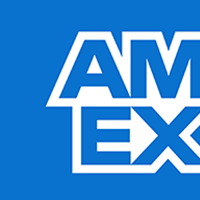1957 Wheat Penny Investment: Value, Grades, and Market Trends
By Bullion Standard ·
6 min read

American Gold Buffalo stands tall with Silver Bars in background, a symbol of precious metal investments.
Discovering the Allure and Legacy of the 1957 Wheat Penny
The 1957 wheat penny, a staple of American numismatics, stands out not only for its historical significance but also for its appeal to both collectors and investors. Minted as the U.S. transitioned into a new era of economic prosperity, these coins offer a tangible glimpse into mid-20th century America. For coin enthusiasts and investors alike, vintage coins such as the 1957 wheat penny serve as fascinating collectibles with the potential for significant financial return. Their inclusion in a bullion portfolio can provide diversification, appealing to those with a keen eye on preserving both cultural heritage and economic value.
Understanding the Value of a 1957 Wheat Penny
Assessing the Market Value: What Determines a Penny's Worth?
The market value of a 1957 wheat penny can vary significantly, influenced by numerous factors. Primarily, its condition plays a pivotal role—ranging from circulated to uncirculated states, the latter commanding notably higher prices due to its pristine preservation. Availability, demand, and historical significance also weigh in heavily.
For instance, a standard circulated 1957 wheat penny might be valued modestly, impacted by its availability with over a billion minted that year. However, a coin in uncirculated condition can fetch much higher prices, especially if accompanied by premium qualities such as original luster and absence of handling wear.
Uncirculated Condition: The Peak of Numismatic Perfection
Uncirculated coins, untouched by the typical wear of circulation, are particularly prized by collectors. Such coins often exhibit full luster, sharp details, and a lack of blemishes or discoloration, making them ideal candidates for serious numismatists aiming to complete a high-grade collection. Prices for uncirculated 1957 wheat pennies can range from several dollars to significantly higher for coins graded at the top end of the scale.
Mint Mark Differences and Market Trends
The presence of a mint mark can further influence the value. For instance, the 1957-D wheat penny, minted in Denver, may differ in price depending on its scarcity relative to its Philadelphia counterpart. Trends in the numismatic market also play a role; as interest in vintage coins fluctuates, so does their market valuation, driven by factors like collector demographics and the overall economy.
Comparative Worth
Compared to other vintage pennies, the 1957 wheat penny holds a favorable position due to its historical context and retained value, making it a worthwhile addition to both beginner and seasoned collectors' portfolios.

Rare Varieties and Errors of the 1957 Wheat Penny
Uncovering Hidden Treasures: Rare Varieties and Errors
The numismatic world is always abuzz with rare finds, particularly those involving errors or unique varieties. The 1957 wheat penny is no exception. Certain mint errors or rare varieties can significantly boost a coin’s worth. Examples include doubled dies, where duplication of the design elements through an error in the minting process, or repunched mint marks, can greatly enhance value as these anomalies captivate collectors.
These error coins are relatively scarce and, consequently, sought after for their uniqueness and the compelling stories they tell about the minting process. Their rarity naturally leads to higher values, sometimes exponentially more than their standard counterparts.
Key Points on Grading Wheat Pennies
The Art and Science of Grading Wheat Pennies
Grading is an essential process in determining the value of a wheat penny. A well-established system evaluates various elements of a coin’s physical condition and presentation.
- Mint State: Coins are graded on a scale from 1 to 70, with those in "mint state" (MS) conditions often being the most valuable. These coins, untouched by everyday circulation, exhibit no signs of wear.
- Luster: This refers to the sheen produced by light reflecting off a coin's surface, indicating minimal handling and enhancing its appeal.
- Blemishes & Strike Quality: Absence of scratches or mars and the precision of the coin's original design details are key considerations. A crisp strike suggests the die at the mint was new and the impression was executed under ideal conditions.
Professional grading services not only authenticate coins but also set a marketplace standard for valuation, providing collectors and investors with trusted assessments to base their investments on.
Pros and Cons of Investing in 1957 Wheat Pennies
Pros:
- Historical Significance and Collector Interest: Collectors cherish coins for their historical narratives, ensuring sustained demand.
- Potential for High Returns: With rare varieties or high-grade coins, investors might see significant financial returns.
- Diversification: As tangible assets, they offer an alternative investment compared to stocks or bonds, adding depth to a portfolio.
Cons:
- Market Fluctuations: Values can fluctuate with changing market interest and economic conditions.
- Counterfeit Risks: The presence of counterfeit coins requires vigilance in ensuring authenticity.
- Storage and Preservation: Maintaining coins in optimal condition involves additional care and proper storage methods.
Maximizing Returns: Strategic Insights for Penny Investors
The 1957 wheat penny remains an intriguing investment option for those interested in the confluence of history and financial value. Its potential for substantial return, when considering rare varieties and high grades, makes it a captivating addition to any portfolio. Positioned strategically, wheat pennies not only complement investments in precious metals but also extend the diversity and stability of an investment strategy. As collectors and investors continue to explore these opportunities, keeping abreast with numismatic trends and market developments will enable informed and advantageous investment decisions.
FAQs
1. What are the historical factors that influenced the minting and distribution of the 1957 wheat penny?
The 1950s were a period of economic growth and expansion in America, reflected in the rampant minting of coins to cater to rising consumer activity. Post-war affluence and technological advancement influenced minting practices as the nation put forward its economic might.
2. How can collectors verify the authenticity and originality of a 1957 wheat penny?
To ensure authenticity, collectors should source coins through reputable dealers and consider certified coins backed by professional grading services like PCGS or NGC, which authenticate and assess coin conditions.
3. What are the potential future market trends for the 1957 wheat penny?
As economic conditions and collector interest evolve, the 1957 wheat penny could see varying trends in demand and value. Staying informed on market trends, such as the growth of digital currency markets and their potential influence on physical collectibles, will be crucial.
4. Can investing in 1957 wheat pennies provide diversification benefits for precious metals investors?
Yes, they offer unique diversification benefits, fulfilling roles similar to precious metals by acting as physical assets with inherent value. They can offset risks associated with traditional market investments and add historical depth to an investment portfolio.
Explore the World of Collectibles with Us
The 1957 wheat penny stands as a testament to history, offering both the thrill of collecting and the potential for financial gain. Are you ready to dive into the world of vintage coins and enrich your investment portfolio with these numismatic treasures? At Bullion Standard, we provide insights and options to complement your precious metals collection. Discover our range of offerings that resonate with both cultural heritage and economic value through our website. Engage with us today and start enhancing your collection and investment strategies.





















